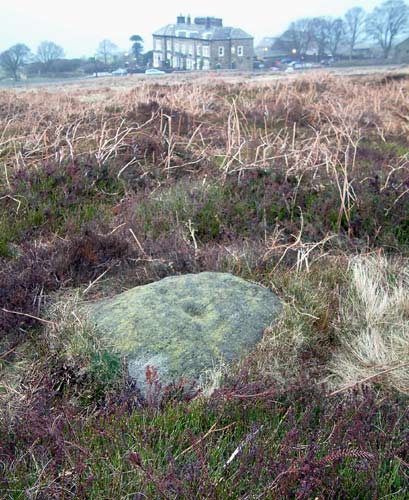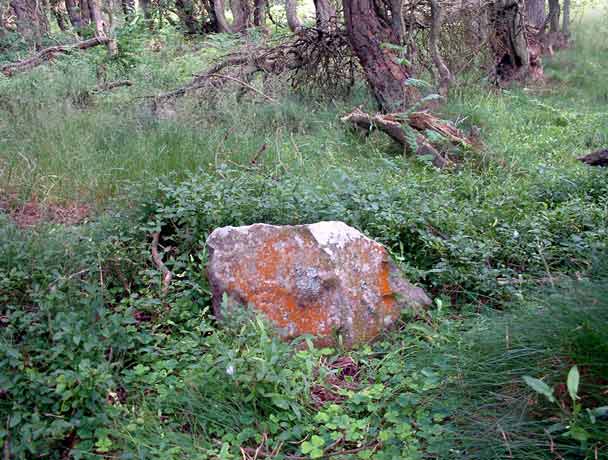

The six surviving stones as seen through the window of the glasshouse

Fencing has recently been erected in the fields at Lyneham long barrow which makes access more difficult. The fencing runs between the barrow and the adjacent standing stone.

The south-western end

The northern side. The barrow stands up to an impressive 6 metres high.

The Rivington Cup and Ring Stone

The Rivington Cup and Ring Stone within its current setting at the Anderton Hall Conference and Training Centre

Robin Hood’s Ball Neolithic enclosure lies beyond this protective fence within the Salisbury Plain army training area. One of the banks can be seen traversing the photo in the middle distance.

View from the south of Castlesteads Iron Age promontory fort. (Photo taken during the Bury Show on the adjacent Burrs Country Park.)

The positions of some of the large post holes, marked out on the surface of the Waitrose supermarket carpark.

The Stoup standing stone stoops, possibly to take a drink from the stoup. (A stoup is a small basin for holy water.)

Part of the hillfort rampart, overlooking the grandstand at Goodwood Racecourse.

The first view of Carve Hill round barrow as one turns the corner on the footpath – it’s big!

Carve Hill round barrow from the north east

One filled-in entrance of over 250 Neolithic flint mines within Cissbury Ring

A small area of the ceiling of Church Hole Cave, showing an engraving/bas relief of a bird’s head thought to have been fashioned in the Upper Palaeolithic. It’s officially described as “a beautiful and unique depiction of a bird-head with a long curved bill”. I disagree. The more I look at it, the more I see a bird with a fish in its mouth.

The two remaining stones of what is presumed to have been a chambered long barrow, although no mound survives and there are no known records of one existing. Known as Two Gates burial chamber.

This photo shows the stone’s location relative to the Cow and Calf Hotel

Avebury Down Stone Circle from the south

Avebury Down Stone Circle from the north

The Caratacus Stone showing what survives of its inscription

One of the larger of the twenty one (or thereabouts) stones remaining in the Culbone Hill Stone Row...

...another stone in the Culbone Hill Stone Row...

...and another...

...there are two stones in this photo...

...yet another of the larger stones in the row

The southern face of The Culbone Stone showing the Christian graffito

The northern side of The Culbone Stone

Maen Crwn Standing Stone

Round barrow on an island in Llyn Brenig, visible from Boncyn Arian round barrow

Boncyn Arian round barrow as seen from the archaeological trail’s car park

This replica of a horse drawn on a piece of rib bone found in Robin Hood’s Cave depicts the only object of portable art portraying an animal from the Upper Palaeolithic yet to be found in Britain. It is on display at the Creswell Crags’ Visitor Centre. The original is in the British Museum, not on display at present.
(Update: In July 2009 I saw the original artefact in the new Visitor Centre at Creswell Crags, on loan from the B.M.)

Cave Spider (Meta menardi) in its lair on the roof of Robin Hood’s Cave, Creswell Crags
















